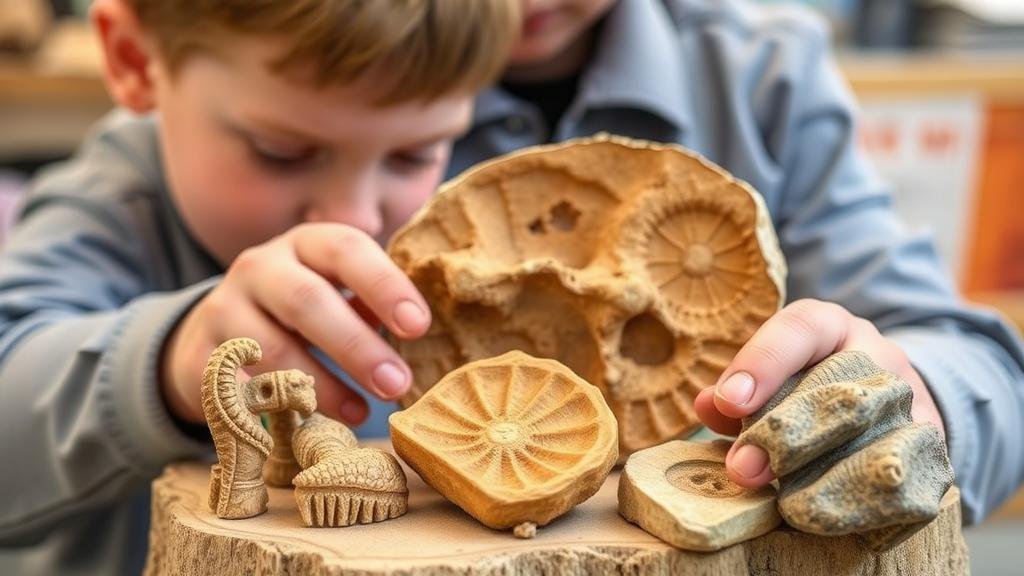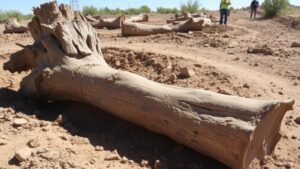Turning Fossils into Educational Products: Selling Kits to Schools and Institutions
Turning Fossils into Educational Products: Selling Kits to Schools and Institutions for Rockhounds and Mineral Collectors
The growing interest in geology and paleontology among students has created a market for educational kits that facilitate hands-on learning experiences. By turning fossils into engaging educational products, companies can cater to schools and institutions while supporting rockhounds and mineral collectors. This article explores the development of fossil educational kits, their benefits, and practical considerations for implementation.
The Importance of Hands-On Learning
Hands-on learning has been shown to improve knowledge retention and engagement in students. According to a study published by the National Training Laboratory, students retain only 10% of what they read, whereas doing leads to a retention rate of 75%. Educational kits that incorporate fossils and minerals allow for interactive learning experiences, fostering curiosity and deepening students understanding of geological concepts.
Components of Effective Educational Kits
To effectively engage students, educational kits should include several key components:
- Fossil Samples: Authentic or high-quality replicas of fossils such as trilobites, ammonites, or dinosaur bones provide tangible connections to ancient life.
- Tools and Materials: Basic excavation tools like brushes, magnifying glasses, and tweezers enable students to engage actively with the specimens.
- Instructional Guides: Comprehensive guides that include background information, excavation techniques, and suggested activities enhance the educational experience.
- Interactive Activities: Activities such as creating a fossil dig site or classifying specimens encourage exploration and cooperation among students.
Real-World Applications in Educational Settings
Many schools and institutions have successfully integrated fossil kits into their curricula. For example, a middle school in Texas reports increased student engagement and understanding in earth science classes after adopting a fossil excavation kit. kit provided students with real-life scenarios where they could apply theoretical knowledge in practical situations, such as learning about stratigraphy, paleoenvironments, and fossilization processes.
Plus, colleges with geology and paleontology programs are equally benefiting from these kits. By incorporating kits into lab sessions, students experience direct examination of fossils, which enhances their research skills and allows them to draw connections between theoretical studies and practical analysis.
Statistics and Data Points
The fossil education kit market is on the rise. According to a report by Grand View Research, the global educational toys market is expected to reach $102.9 billion by 2026, with a significant portion attributed to science and geology education. Also, institutions that have implemented hands-on learning strategies report a 20-30% increase in student performance related to earth science subjects, underscoring the value of incorporating fossils into educational kits.
Considerations for Collectors and Kit Developers
Rockhounds and mineral collectors looking to develop and sell fossil educational kits should consider the following:
- Quality Sources: Secure fossils from reputable sources to ensure authenticity and educational value. Organizations like the American Geosciences Institute can provide guidelines on sourcing.
- Compliance with Educational Standards: Align the kits with state and national educational standards to facilitate adoption by schools.
- Marketing Strategies: Engage with educators through workshops, presentations, or online platforms to showcase the value of these kits in enhancing learning.
Actionable Takeaways
In summary, turning fossils into educational products is not only beneficial for students but also presents opportunities for rockhounds and mineral collectors. By focusing on hands-on learning experiences that enrich educational environments, developers can create valuable kits that align with curriculum goals. Key steps include ensuring quality sources, compliance with educational standards, and active engagement with educational institutions.
Utilizing the growing interest in geology and paleontology, the future of fossil educational kits looks promising, ensuring that both students and educators have the tools they need to explore the fascinating world of fossils.



